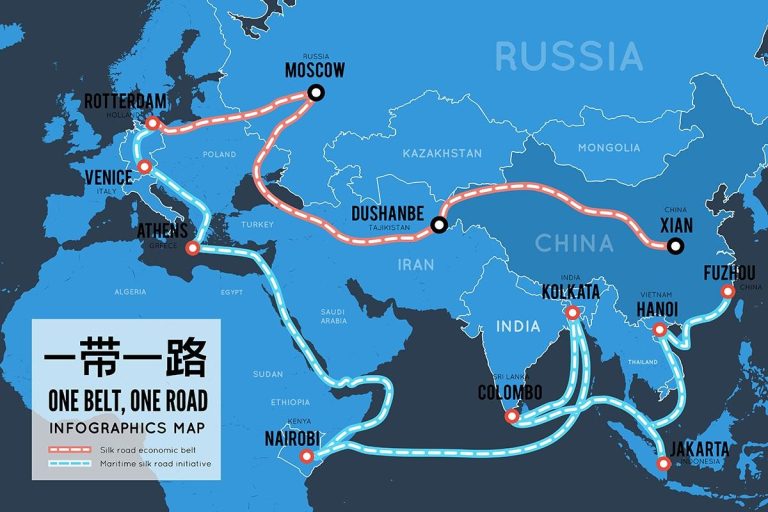A decade after its launch, China’s Belt and Road Initiative has reshaped global development finance, funding ports, railways and power plants from Southeast Asia to Africa. Supporters say the program has filled chronic infrastructure gaps, boosted trade links and created jobs. Critics warn it has saddled governments with heavy debts, locked in opaque contracts and advanced Beijing’s strategic reach at the expense of local interests and environmental standards.
As Beijing shifts from mega-projects to what officials call “small and beautiful” deals, the initiative is entering a second phase shaped by tighter finances, partner-country debt stress and rising geopolitical competition. Western capitals are rolling out rival plans, while some host nations renegotiate terms, shelve projects or seek greener, more transparent financing. This article examines the gains and the grievances of the Belt and Road-and what its recalibration means for the next decade.
Table of Contents
- Belt and Road projects lift trade and energy access as debt exposure political leverage and environmental costs fuel backlash
- Case studies in Kenya Pakistan and Laos show uneven returns opaque contracts and security frictions
- What host nations should do demand transparent tenders publish full contracts apply IMF debt tests set local job targets and enforce environmental safeguards
- The Conclusion
Belt and Road projects lift trade and energy access as debt exposure political leverage and environmental costs fuel backlash
New rail spurs, deep-water ports, and cross-border power lines are widening market access and adding capacity to fragile grids, even as borrowers face tighter refinancing windows and heightened scrutiny of opaque terms; with projects stretching from Piraeus to Pakistan, the program’s economic promise is tempered by concerns over fiscal stress, diplomatic sway, and ecological footprints that are now shaping election debates and donor policy in multiple regions.
- Trade gains: Freight times fall on Eurasian and African routes, lifting exports for agribusiness and light manufacturing.
- Energy access: New generation and transmission reduce outages in South and Southeast Asia, supporting industry and households.
- Debt risks: Maturities cluster as currencies weaken, pushing restructurings and emergency support onto negotiating tables.
- Political leverage: Confidential clauses and collateralized assets stoke worries about policy concessions and strategic control.
- Environmental costs: Dredging, deforestation, and coal-linked capacity clash with climate goals and local livelihoods.
Case studies in Kenya Pakistan and Laos show uneven returns opaque contracts and security frictions
Across three high-profile projects, measurable gains are tempered by fiscal strain and political blowback, as host governments juggle growth promises with public skepticism over terms and policing around strategic sites.
- Kenya: The Nairobi-Mombasa SGR boosted freight capacity but missed early traffic targets, forcing policy nudges to shift cargo from road to rail. Debt servicing remains heavy, while portions of loan and procurement documents stay confidential, fueling scrutiny over cost overruns and asset risk despite official denials of port collateralization.
- Pakistan: Under CPEC, new power plants eased outages, yet rising capacity payments worsened the circular debt. Attacks on Chinese personnel and tightened security in Balochistan and along transport corridors have raised insurance costs and delayed timelines, even as roads and energy supply improve.
- Laos: The Vientiane-Boten railway slashed travel times and lifted freight and tourism, but debt pressures deepened amid a weak currency and opaque renegotiations. A long-term grid concession to a Chinese operator highlighted sovereign leverage concerns, while enhanced security protocols around transit hubs stirred local unease over access and land use.
What host nations should do demand transparent tenders publish full contracts apply IMF debt tests set local job targets and enforce environmental safeguards
With scrutiny intensifying around cross-border infrastructure finance, reform-minded governments are moving to standardize oversight and accountability in flagship projects. The emerging playbook centers on five guardrails: • Run open, competitive tenders with pre-bid disclosure of feasibility studies, evaluation criteria, and beneficial ownership of bidders; • Publish full contracts and annexes in a searchable registry within 30 days, limiting redactions to narrowly defined security concerns; • Apply IMF debt sustainability tests before signing, stress-testing contingent liabilities and exchange-rate exposure; • Set enforceable local job and training targets linked to milestone payments and validated by independent auditors; • Enforce environmental and social safeguards aligned with IFC Performance Standards, including baseline data, cumulative impact assessments, and accessible grievance mechanisms. Early adopters report tighter pricing, fewer delays, and improved public trust, while opaque deals increasingly face parliamentary pushback, court challenges, and lender conditionalities.
The Conclusion
A decade on, the Belt and Road has stitched together ports, railways and power lines that promise to ease bottlenecks and boost trade. It has also left a trail of heavy debts, stalled works and political unease from Southeast Asia to Eastern Europe. As Beijing shifts toward smaller, greener and more tightly vetted deals, the initiative is entering a leaner phase shaped as much by China’s slower growth and capital constraints as by borrower caution.
For recipient governments, the calculus is changing: more emphasis on transparent procurement, debt sustainability and local benefit, and more options as the G7’s Partnership for Global Infrastructure and the EU’s Global Gateway vie for influence. Lenders and multilaterals are pushing stricter standards and co-financing, while debt restructurings test how far China will go to safeguard relationships without writing off too much.
The next chapter will be decided project by project. The measure of success will be less about ribbon-cuttings than whether the roads and ports are commercially viable, climate resilient and politically durable-and whether partners feel they have a real say in the terms.


